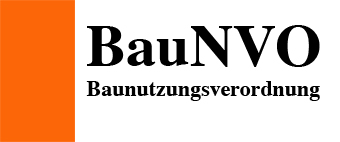|
|
 | 1. | Climate as a Public Interest in Planning and Zoning |
| | | |
Burdens on the environment typically go hand in hand with the demands placed on areas of land by correspondingly intense land uses. It therefore makes sense to use the means of regional and urban development to pursue a precautious planning towards the aim of environmental protection. Accordingly, the current German environmental law deals with spatial planning in addition to its original focus on the commercial realm. Zoning and planning at the municipal level thus serves as an important instrument that contributes significantly to climate protection and the preservation of air quality: A site plan that has been developed in accordance with the land use plan of a municipality has binding authority to determine whether land areas are used in a manner that the environment can tolerate. Various legal demands also take this issue into account.
According to § 1 (5) of the German Building Code BAUGESETZBUCH (BauGB), urban development planning has to be sustainable, integrate social, economic and ecologic demands and assume the responsibility for future generations. Urban development plans have to contribute to an environment fit for human beings, to the protection and development of natural resources, also in regard to climate protection, as well as preserve and develop the urban pattern and the appearance of the landscape and of the town or city.
According to § 1 (6) of the German Building Code, especially the following aspects have to be taken into account when establishing urban development plans:
No. 7 environment protection aspects, including the conservation of nature and landscape management, especially
a) the consequences on animals, plants, soil, air, climate and the interactions between them, as well as the landscape and biological diversity, ...
d) environmental effects on human beings and their health as well as on the population as a whole,
e) the avoidance of emissions...,
f) the use of renewable energies as well as the economical and efficient use of energy,
g) the presentation of landscape plans and green open space structure plans as well as of other plans, especially concerning water rights, waste rights and pollution control rights,
h) the conservation of the best possible air quality in areas where the fixed immission protection limit values are not exceeded and
i) the interactions between the different aspects of environmental protection.
The requirements of the Federal Immission Control Act (Bundes-Immissionsschutzgesetz, BImSchG) concerning air pollution control strategies in particular areas (see §§ 49, 50 of the Federal Immission Control Act) are applied for the weighing of interests in development planning especially with issue h).
Supplementary regulations in § 1a of the German Building Code concretise these ecological aspects which have to be weighed and which can also have a positive influence on our climate:
In a soil protection clause the possibilities of the reclamation of land, infill development and other measures of development of core areas are mentioned exemplarly. The sealing of soil surface has to be restricted as much as possible (§ 1a (2)).
According to § 1a (3) of the German Building Code, the compensation of intrusions upon the natural environment also belongs to the aspects of environmental protection which have to be taken into account. The compensation is done by suitable descriptions according to § 5 of the German Building Code in the structure plan or by regulations in the zoning map according to § 9.
We want to point out that one of the aims of nature and landscape protection is to make sure that our natural assets (soil, water, climate, fauna and flora) can regenerate and can be used sustainably in future (see § 1 (1) no. 2 of the Federal Nature Conservation Act (Naturschutzgesetz, NatSchG)).
According to the European Law Adaption Act for the construction sector (conversion of EU guideline 2001/42/EC into national law), it had been necessary in 2004 to amend the German Building Code. This was an occasion to revise the German Building Code completely.
§ 2 (4) of the German Building Code requires an environmental impact assessment for development planning in which significant expected effects on the environment are determined, described and evaluated. § 2a requires, besides the argumentation for a development plan draft, a separate environmental report as part of the argumentation. This means that a separate regulation on environmental impact assessments for particular urban development plans, like in § 1a (2) no. 3, is no longer necessary.
According to this, § 17 of the Environmental Impact Assessment Law (Umweltverträglichkeitsprüfungsgesetz, UVPG) makes clear that land-use plans in the meaning of § 2 (3) no. 3 and especially plans according to no. 18.1 to 18.9 of Appendix 1 have to be carried out in compliance with the regulations of the German Building Code.
The guidelines of the previous § 1 (5) sentence 2 no.7 together with the regulations of the previous §§ 1a and 2a as well as with the regulations of annex I of the SEA Directive and of annex IV of the EIA Directive are combined in § 1 (6) no. 7 (see above). Compared to the environmental assessement up to now according to the EIA Directive, it is new that the investigation is not restricted to negative environmental impacts.
The revision of the existing German Building Code from 1 January 1977 made comparable demands for precautious environmental protection in zoning and planning and also took into account the precautionary principle embodied in the 1974 Federal Immission Control Act. § 50 of the Federal Immission Control Act formulates a principle that binds every planning-related entity: "The areas foreseen in spatial plans and measures for a defined use are to be arranged in a way that environmentally-damaging effects are avoided as far as possible on exclusively or predominantly residential areas as well as other areas requiring protection."
According to § 4 (1) of the German Building Code, the municipality has to solicit as early as possible the input of the authorities and other public agencies whose areas of responsibility are affected. The public agencies have to be informed and asked for a statement, also concerning the necessary extent and degree of specification of the environmental impact assessment.
For the handling of the planning factors air and climate, however, no particular authority or office is specifically responsible as public agency. The traditional bases for climate protection and preservation of air quality lie (according to their emphases) in the areas of:
- Worksite protection, worksite medical services, and neighborhood protection (protection from emissions and damaging environmental effects)
- Local and environmental hygiene (from a largely medical perspective)
- Nature and landscape protection
Various participants in planning processes can thus represent this interest in the public-input process, especially because air and climate are omnipresent and therefore overlap with other concerns.
The municipalities" role is to monitor the significant environmental impacts expected as a result of the realisation of the urban development plans. This enables them to determine unexpected negative impacts at an early stage and take the appropriate measures. For this, the municipalities use the monitoring measures that have to be indicated in the environmental report as well as the information given by the authorities according to § 4 of the German Building Code.
The law on the easier implementation of plans for the inner development of towns and cities from 21 December 2006 amended the German Building Code as from 1 January 2007 to the effect that land-use plans for the reclamation of land, for infill development and for other measures for the inner development of cities can be established, under certain conditions, in an accelerated procedure and without an environmental impact assessment (this is called a land-use plan for inner development). The maximum size of the area for this procedure is 70,000 m² and a rough examination has to come to the estimation that the land-use plan is not expected to have significant environmental impacts which would have to be considered according to § 2 (4) sentence 4 of the German Building Code (preliminary examination of an individual case). The authorities and other public agencies whose responsibilities can be affected by the planning are to be involved in the preliminary examination of the individual case.
The German Building Code and the Land Use Ordinance BAUNUTZUNGSVERORDNUNG (BauNVO) offer differentiated possibilities for urban development that is climatically just. The legal catalogue of permissible instruments in zoning and planning has been expanded (§ 9 (1), (1a) of the German Building Code). There is, however, no instrument that can bring about on its own a healthy urban climate.
The new legal instruments embodied in the "urban planning contract" (§ 11 of the German Building Code) and the "project completion plan" (§ 12 of the German Building Code) accommodate the consideration of urban climate interests in several regards:
The representation of the concrete project in the project completion plan allows for the examination and assessment of all climatic effects on the surrounding area resulting from the forms of built structures. This has relevance for the aspects of sunlight, lighting, possibilities for solar use and bioclimatic conditions.
The instrument of the urban planning contract can tie together an energy provision concept (e.g. solar-thermal energy) with its technical details.
Urban development contracts can also be used as goal-setting contracts for the implementation of climate-protecting measures along the lines of the Federal "Agenda 21" program.
In light of worldwide efforts towards the protection of the earth’s atmosphere, one can conclude, based on altered appraisals in favour of environmental protection – especially in favour of air and climate – that the value of these factors is no longer limited to aspects of the local climatology and the climate of the local terrain.
Large-scale climate protection is to be taken into consideration in zoning and planning as a public interest. This issue is now also dealt with in the German constitution, which defines environmental protection in Article 20 a as a state goal. Undefined legal terms (for example "in the interest of the general public") must now be interpreted in light of this state goal.
|
|
| | | |
 |
German Federal Building Law (2011)
.
| | |
 |
| Federal Emission Protection Law (2011) | | |
 |
| Building Use Regulation (1993) |
|
